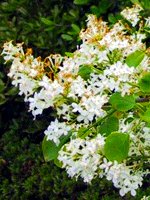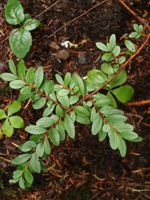Mon-Fri 9am - 5pm Mountain time
Peking Lilac vs Falsebox
Syringa pekinensis
Paxistima myrsinites
NOT AVAILABLE THIS SEASON - MIGHT RETURN
CUSTOM GROW
Peking Lilac is a small, deciduous shrub. This robust species is not as fragrant as Common Lilac, but it makes up for it with its large clusters of beautiful white flowers in the spring.
Perfect for any yard, Peking Lilac does not sucker, seldom suffers from disease, and requires little pruning.
Falsebox is a hardy, native evergreen shrub found in forests, rocky slopes, and open woodland sites. Though small and easily overlooked among the leaves, the maroon flowers still supply nectar and pollen for pollinators such as native bees and flies. Blooming in spring, they provide an important early-season food source. Its year-round greenery adds visual interest through the winter.
Falsebox is a low-growing shrub that tolerates a wide range of conditions, including drought once established. It thrives particularly well beneath the shade of mature trees, where few other plants succeed. With its resilience and ecological value, Falsebox is well-suited for naturalization, restoration projects, and diverse landscape plantings.
Peking Lilac Quick Facts
Falsebox Quick Facts
In row spacing: 0.9 m (3 ft)

